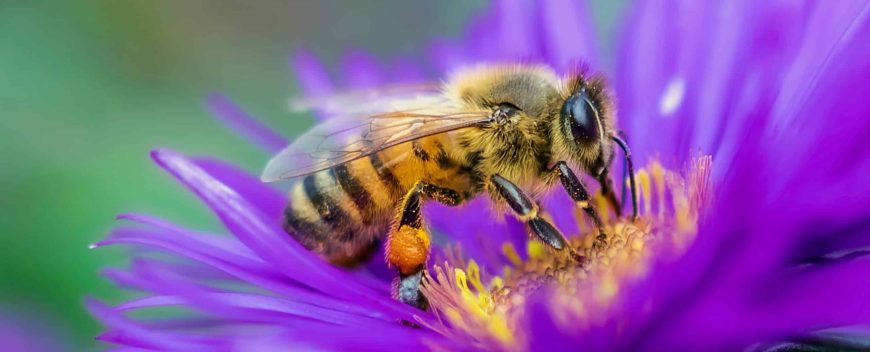By Aimee Wilson
How do you communicate with your friends? You might have a chat at school, call them, or send
them a message on an app. But what about… dancing?
It might sound like a strange way to communicate, but one tiny member of the animal world has
mastered the art of communicating complex messages through dance. I’m talking about the
common everyday honey bee.

Like ants, wasps, and termites, bees are social insects, meaning they live in large groups or colonies
of many thousands of individuals. Most of the bees in a colony are workers, whose job it is to collect
pollen and nectar from flowers. Pollen is the bees’ main source of protein, and they use the nectar
to make honey, which is also an important food for all the bees in the hive – and us as well!
FUN FACT! All worker bees in a colony are female!
But have you ever heard the saying ‘busy as a bee’? Bees just don’t have time to go casually
searching for good flowers. They rely on their fellow workers to share information on where the
good stuff is.
A special advance party of bees, known as scouts, is sent out when the hive’s food supply is running
low. The scouts’ job is to find some good nectar and pollen, and then report back.
This reporting back is just like a scene from Saturday Night Fever – the scout bees are surrounded by
workers as they prepare to perform their most peculiar dance, known as a ‘waggle dance’.

First the dancing bee waggles her body from side to side as she moves in a straight line – this is
known as the ‘waggle run’. Once she reaches the end of the waggle run, she circles back to where
she started and repeats the process, alternating left and right circles between waggles to make a
figure-8 pattern. The whole dance might be repeated anywhere from just once to more than 100 times.
But unlike a human dance floor queen, the dancing bee is communicating crucial information on the
location and quality of what will become the colony’s next meal.
There are three different factors in the waggle dance – the direction the bee waggles in, the length
of the waggle run and the size of the waggles.
Beehives are generally vertical inside, and the direction the bee waggles in tells the other bees which
direction they should fly in. Straight up means straight towards the sun, and straight down means
straight away from the sun.

The length of the waggle tells the other bees how far away the food is. A really long waggle run
means it’s a long way away, and a short waggle run means it’s close.
And the quality of the food is communicated in how hard the dancing bee shakes its booty. Really
big waggles mean that it’s a really good source of nectar.
The other bees can interpret this information with amazing accuracy, so that no time is wasted in
getting all the precious bee food back to the hive.
If only humans had the same skills – next time someone stops you to ask for directions to the
nearest supermarket, try waggling at them! You never know…it just might work.



